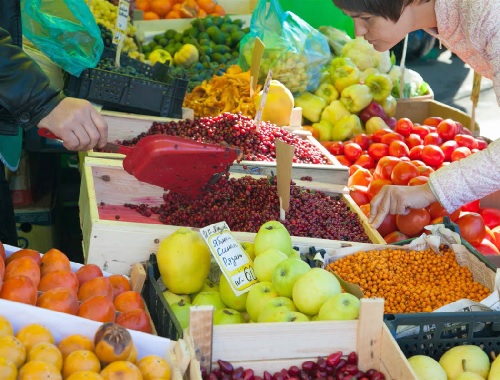
BY ALAZAR SHIFERAW
Globally, especially in developing countries, deficiencies of essential nutrition such as vitamins, minerals and calories in the foodstuff are affecting nutritional quality of individuals and impacting public health negatively.
However, as nutritionists suggest, the deficiency is mostly occurred by lack of diversity in the diet, applying improved preservation methods of food and other similar limitations rather than economic factors.
To this end, they suggest a range of interventions including applying bio-fortification approach, improved food preservation as some of the mechanisms which can increase vitamins and mineral content of staple foods.
Bio- fortification is the practice of deliberately increasing the content of an essential micronutrient, i.e. vitamins and minerals (including trace elements) in a food, so as to improve the dietary quality of the food supply and ensure food safety.
According to the dieticians, bio-fortification of staple crops can increase vitamins and minerals content. It can improve the nutritional quality of food crops through agronomic practices, conventional plant breeding, or modern biotechnology. As to them, the practice is cost-effective and sustainable strategy.
Breeding increases nutrient level without reducing yield and believed to produce healthy citizens, noted Ministry of Agriculture.
According to Tewdros Girma, Senior Nutrition Sensitive Agriculture (NSA) Advisor with the Ministry, good agricultural practice (GAP), decent husbandry practice, post-harvest handling and safety food for nutrition content are crucial to keep public health.
Bio-fortification is a practice that addresses environmental, economic and social sustainability for on-farm processes and result in safe and quality food among others agricultural products.
Likewise, Good Agricultural Practice (GAP) is the other intervention that promotes good husbandry practice, post-harvest handling and safe food for nutrition content.
However, concurrent to bio-fortification, good practices of food handling materializes: crops must be harvested at an appropriate stage of maturity, good post-harvest handling, supported by appropriate transport and logistical operations are crucial to improve nutritional quality.
Safety of food is the assurance that diet will not cause harm to the consumer when it is prepared or eaten according to its intended use. Safe food is a suitable product when consumed orally either by a human or an animal that does not cause health risk to consume.
As to him, there are three potential sources of health risks caused by food. These are biological, microorganisms and chemical hazards. Besides, improperly stored, handled and used; chemicals can be a source of contamination because environmental contaminants can be potential sources of health risks. Improper storage such as migrants from packaging materials, direct contact of foods with packaging materials can also result in chemical contamination.
Moreover, certain toxic or undesirable compounds can be formed in foods during their processing, such as during heating, baking, roasting, grilling, canning, hydrolysis or fermentation. Therefore, good food handling practices, from farm to plate, are critical for improved nutrition.
To this end, promoting techniques of food preservation like soaking, malting, sprouting and fermentation of grains and pulses is basic to optimize the shelf-life and nutritional quality of food processing techniques, enhancing their vitamin, mineral and protein content and bioavailability. Promoting appropriate cooking techniques that is avoiding overcooking, over drying, and prolonged sun exposure to retain nutrient content of the produce are have by far importance.
Equally important, women empowerment is at the nexus of the agriculture, nutrition and health sectors. Researches show that resources and income flows that women control have positive impacts on nutrition because they are more likely to be directed towards food, education, health and care. Women empowerment for nutrition can be addressed through ensuring access to productive resources, he said.
Introduction of time and labor-saving farming technologies, male involvement in household care practice have also significant importance in the household budgeting and income generation as income generation leads to improved nutrition. Value addition practice, caged poultry production, seed and seedling multiplication off farm activities, animal fattening and dairy farming practice, horticulture and spices among others can increase incomes and at the same time, improve nutritional quality of individuals’ intakes.
Additionally, agricultural market linkages for improved nutrition, significantly aquaculture need to be considered by the rural farming households. Also marketing helps to balance food deficits and surpluses across countries. In the context of urbanization and increased market reliance, looking at trade through a nutrition lens is becoming important to maximize nutritional benefits, he said.
Therefore, to promote and sustainably increase availability and affordability of diversified nutritious foods for household consumption is of importance to improve nutrition. Marketing helps to balance food deficits and surpluses across countries. In the context of urbanization and increased market reliance, looking at trade through a nutrition lens is becoming important to maximize nutritional benefits.
Nutrition-sensitive social protection like safety nets and social protection schemes can also play an important role in improving nutrition and addressing the social and economic determinants of malnutrition. Acute and long-term negative effects of shocks can be reduced if social protection systems already in place and can be expanded and adapted in a timely manner.
Every social protection programs provide specific entry points for increasing their impact on nutritional outcomes. It helps families to access nutritious food, while helping to develop their productive asset base which is critical for sustaining good nutrition in the long- term.
Food transfers in kind can be maximized by adding nutrition education component, and ensuring high nutritional quality of food baskets. Besides, promoting local procurement for social assistance programs, such as for school meals or food distribution can improve nutrition for both consumers and poor producers, he said.
Significantly, nutrition education and behavior change communication to community can be delivered using multiple approaches. Because, the more frequently and consistently individuals practice the desired behaviors, the higher the outcomes of behavior change.
In sum, nutrition sensitive agriculture intervention approaches need to be implemented synergistically for improved nutrition outcome. Making agriculture and food systems nutrition-sensitive necessitates taking action to address input quality, production, post-harvest handling, processing, retailing and consumption.
The Ethiopian Herald February 14/2021





You really highlights the importance of proper food handling and nutrition in promoting better public health. It’s crucial to ensure that food is both safe and nutritious to improve the overall quality of life, especially in developing countries. Speaking of quality food, when you’re looking for a tasty yet refreshing treat, Sonic Drive-In offers an amazing Sonic Strawberry Mangonada Slush. It’s a perfect balance of sweet and tangy, and it’s made with real fruit flavors that make for a delicious way to cool off. It’s great to remember that good food choices, whether for nutrition or refreshment, can play an important role in overall well-being.